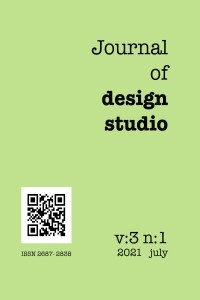Abstract
References
- Australian Government, D. of H. (2021, June 16). 12. Housing and homelessness. https://www1.health.gov.au/internet/publications/publishing.nsf/Content/mental-pubs-p-psych10-toc~mental-pubs-p-psych10-12
- Autodesk. (2021, January 5). Revit. Autodesk. https://www.autodesk.com/products/revit/overview
- Braun, V., & Clarke, V. (2006). Using thematic analysis in psychology. Qualitative Research in Psychology, 3(2), 77–101. https://doi.org/10.1191/1478088706qp063oa
- Brynskov, M., Dalsgaard, P., & Halskov, K. (2015). Media Architecture: Engaging Urban Experiences in Public Space. In J. Lossau & Q. Stevens (Eds.), The Uses of Art in Public Space (pp. 51–66). http://site.ebrary.com/id/10994059
- Caldwell, G. A. (2016). Media architecture: Facilitating the co-creation of place [10.5204/thesis.eprints.101548]. https://eprints.qut.edu.au/101548/
- Caldwell, G. A., & Foth, M. (2014). DIY media architecture: Open and participatory approaches to community engagement. Proceedings of the 2nd Media Architecture Biennale Conference on World Cities - MAB ’14, 1–10. https://doi.org/10.1145/2682884.2682893
- Castronovo, F., Oprean, D., Liu, Y., & Messner, J. (2017). Application of immersive virtual reality systems in an interdisciplinary design studio course. Lean and Computing in Construction Congress (LC3): Volume I Proceedings of the Joint Conference on Computing in Construction (JC3), 337–345.
- Chamberlain, C., & MacKenzie, D. (1992). Understanding contemporary homelessness: Issues of definition and meaning. Australian Journal of Social Issues, 27(4), 274–297.
- Dalsgaard, P., & Halskov, K. (2017). Designing Media Architecture: Methods and Tools. In A. Wiethoff & H. Hussmann (Eds.), Media architecture: Using information and media as construction material (pp. 125–146). Walter de Gruyter.
- Dalsgaard, P., & Halskov, K. (2010). Designing urban media façades: Cases and challenges. Proceedings of the 28th International Conference on Human Factors in Computing Systems - CHI ’10, 2277. https://doi.org/10.1145/1753326.1753670
- Desai, P. R., Desai, P. N., Ajmera, K. D., & Mehta, K. (2014). A review paper on oculus rift-a virtual reality headset. ArXiv Preprint ArXiv:1408.1173.
- Epic Games. (2020, November 13). Twinmotioin. Twinmotion. https://www.unrealengine.com/en-US/twinmotion
- Fong, & Chan. (2019, January 23). Media Architecture; Past, Present, Future. Fong & Chan Architects. http://www.fca-arch.com/insights/2019/1/23/media-architecture-in-2019
- Graphisoft. (2020, November 13). Archicad. Archicad. https://graphisoft.com/
- Gross, M., & Do, E. (1999). Integrating digital media in design studio: Six paradigms. Proceedings of the American College Schools of Architecture Conference, Minneapolis, gub.
- Haeusler, M. H., Tomitsch, M., Tscherteu, G., & Berkel, B. van. (2012). New media facades: A global survey. Avedition.
- Hersberger, J. (2005). The homeless and information needs and services. Reference & User Services Quarterly, 44(3), 199–202.
- Huey, L. (2012). Invisible victims: Homelessness and the growing security gap. University of Toronto Press.
- Jenek, W., Caldwell, G., Donovan, J., Garcia Hansen, V., Adcock, M., & Xi, M. (2021). Shaping the future of interactive architecture design: Exploring media architecture design in virtual design environments in a university context. AECURN 2021 Symposium.
- Jenek, W., Caldwell, G., Donovan, J., Hansen, V. G., Adcock, M., & Xi, M. (2020). Exploring Media Architecture Design in Virtual Design Environments. Journal of Design Studio, 2(2), 159–163. https://doi.org/10.46474/jds.825715
- Keller, J. M. (2010). Motivational Design for Learning and Performance. Springer US. https://doi.org/10.1007/978-1-4419-1250-3
- Knowlton, D. S. (2016). Design studios in instructional design and technology: What are the possibilities? TechTrends, 60(4), 350–358.
- Kvan, T. (2001). The pedagogy of virtual design studios. Automation in Construction, 10(3), 345–353.
- Le Dantec, C. A., & Edwards, W. K. (2008). Designs on dignity: Perceptions of technology among the homeless. Proceedings of the SIGCHI Conference on Human Factors in Computing Systems, 627–636.
- Lumion. (2021, January 5). Lumion. Lumion. https://lumion.com/
- Maher, M. L., Simoff, S. J., & Cicognani, A. (2012). Understanding virtual design studios. Springer Science & Business Media.
- Obeid, S. (2019). The influence of virtual reality on design process creativity in basic design education [PhD Thesis]. Bilkent University.
- Parker, C., Jenek, W., Yoo, S., & Lee, Y. (2018). Augmenting Cities and Architecture with Immersive Technologies. Proceedings of the 4th Media Architecture Biennale Conference, 174–177.
- Wei, X., Weng, D., Liu, Y., & Wang, Y. (2015). Teaching based on augmented reality for a technical creative design course. Computers & Education, 81, 221–234. https://doi.org/10.1016/j.compedu.2014.10.017
Exploring Immersive Technology for Architecture that Empowers Marginalized People: An Australian Postgraduate Case Study in Design Education
Abstract
This paper examines a case study part of an ongoing PhD research at Queensland University of Technology, Brisbane, Australia. The case study investigates how architecture students can employ media architecture design with real-time-render software tools to empower people without permanent residence. As part of the assignment students developed a media architecture structure during the semester to support people who are facing homelessness. The target participants of this study were master architecture students at Queensland University of Technology. Students participated in an online survey and semi-structured interviews at the end of the semester to provide feedback about their learning experience during the master class. The data was analysed with thematic analysis. The study results explore the potential of technology to face the ongoing issues of homelessness. It opens the discussion how media architecture can be utilised to target issues such as displacement and marginalization. The results allow to refine future studio education and endeavour how to employ real-time software in a studio context.
Keywords
Design education Design studio Immersive design environment Media architecture Homelessness
References
- Australian Government, D. of H. (2021, June 16). 12. Housing and homelessness. https://www1.health.gov.au/internet/publications/publishing.nsf/Content/mental-pubs-p-psych10-toc~mental-pubs-p-psych10-12
- Autodesk. (2021, January 5). Revit. Autodesk. https://www.autodesk.com/products/revit/overview
- Braun, V., & Clarke, V. (2006). Using thematic analysis in psychology. Qualitative Research in Psychology, 3(2), 77–101. https://doi.org/10.1191/1478088706qp063oa
- Brynskov, M., Dalsgaard, P., & Halskov, K. (2015). Media Architecture: Engaging Urban Experiences in Public Space. In J. Lossau & Q. Stevens (Eds.), The Uses of Art in Public Space (pp. 51–66). http://site.ebrary.com/id/10994059
- Caldwell, G. A. (2016). Media architecture: Facilitating the co-creation of place [10.5204/thesis.eprints.101548]. https://eprints.qut.edu.au/101548/
- Caldwell, G. A., & Foth, M. (2014). DIY media architecture: Open and participatory approaches to community engagement. Proceedings of the 2nd Media Architecture Biennale Conference on World Cities - MAB ’14, 1–10. https://doi.org/10.1145/2682884.2682893
- Castronovo, F., Oprean, D., Liu, Y., & Messner, J. (2017). Application of immersive virtual reality systems in an interdisciplinary design studio course. Lean and Computing in Construction Congress (LC3): Volume I Proceedings of the Joint Conference on Computing in Construction (JC3), 337–345.
- Chamberlain, C., & MacKenzie, D. (1992). Understanding contemporary homelessness: Issues of definition and meaning. Australian Journal of Social Issues, 27(4), 274–297.
- Dalsgaard, P., & Halskov, K. (2017). Designing Media Architecture: Methods and Tools. In A. Wiethoff & H. Hussmann (Eds.), Media architecture: Using information and media as construction material (pp. 125–146). Walter de Gruyter.
- Dalsgaard, P., & Halskov, K. (2010). Designing urban media façades: Cases and challenges. Proceedings of the 28th International Conference on Human Factors in Computing Systems - CHI ’10, 2277. https://doi.org/10.1145/1753326.1753670
- Desai, P. R., Desai, P. N., Ajmera, K. D., & Mehta, K. (2014). A review paper on oculus rift-a virtual reality headset. ArXiv Preprint ArXiv:1408.1173.
- Epic Games. (2020, November 13). Twinmotioin. Twinmotion. https://www.unrealengine.com/en-US/twinmotion
- Fong, & Chan. (2019, January 23). Media Architecture; Past, Present, Future. Fong & Chan Architects. http://www.fca-arch.com/insights/2019/1/23/media-architecture-in-2019
- Graphisoft. (2020, November 13). Archicad. Archicad. https://graphisoft.com/
- Gross, M., & Do, E. (1999). Integrating digital media in design studio: Six paradigms. Proceedings of the American College Schools of Architecture Conference, Minneapolis, gub.
- Haeusler, M. H., Tomitsch, M., Tscherteu, G., & Berkel, B. van. (2012). New media facades: A global survey. Avedition.
- Hersberger, J. (2005). The homeless and information needs and services. Reference & User Services Quarterly, 44(3), 199–202.
- Huey, L. (2012). Invisible victims: Homelessness and the growing security gap. University of Toronto Press.
- Jenek, W., Caldwell, G., Donovan, J., Garcia Hansen, V., Adcock, M., & Xi, M. (2021). Shaping the future of interactive architecture design: Exploring media architecture design in virtual design environments in a university context. AECURN 2021 Symposium.
- Jenek, W., Caldwell, G., Donovan, J., Hansen, V. G., Adcock, M., & Xi, M. (2020). Exploring Media Architecture Design in Virtual Design Environments. Journal of Design Studio, 2(2), 159–163. https://doi.org/10.46474/jds.825715
- Keller, J. M. (2010). Motivational Design for Learning and Performance. Springer US. https://doi.org/10.1007/978-1-4419-1250-3
- Knowlton, D. S. (2016). Design studios in instructional design and technology: What are the possibilities? TechTrends, 60(4), 350–358.
- Kvan, T. (2001). The pedagogy of virtual design studios. Automation in Construction, 10(3), 345–353.
- Le Dantec, C. A., & Edwards, W. K. (2008). Designs on dignity: Perceptions of technology among the homeless. Proceedings of the SIGCHI Conference on Human Factors in Computing Systems, 627–636.
- Lumion. (2021, January 5). Lumion. Lumion. https://lumion.com/
- Maher, M. L., Simoff, S. J., & Cicognani, A. (2012). Understanding virtual design studios. Springer Science & Business Media.
- Obeid, S. (2019). The influence of virtual reality on design process creativity in basic design education [PhD Thesis]. Bilkent University.
- Parker, C., Jenek, W., Yoo, S., & Lee, Y. (2018). Augmenting Cities and Architecture with Immersive Technologies. Proceedings of the 4th Media Architecture Biennale Conference, 174–177.
- Wei, X., Weng, D., Liu, Y., & Wang, Y. (2015). Teaching based on augmented reality for a technical creative design course. Computers & Education, 81, 221–234. https://doi.org/10.1016/j.compedu.2014.10.017
Details
| Primary Language | English |
|---|---|
| Subjects | Architecture |
| Journal Section | Design Studio Cases |
| Authors | |
| Publication Date | July 20, 2021 |
| Published in Issue | Year 2021 Volume: 3 Issue: 1 |
This work is licensed under a Creative Commons Attribution 4.0 International License.
The articles published in Journal of Design Studio had been similarity checked by intihal.net

CALL FOR ARTICLES
Journal of Design Studio call for research papers on studios in all disciplines. Please submit your article by using Dergipark online submission system.


